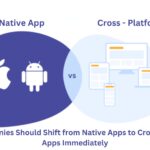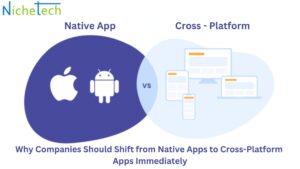In the digital age, a strong online presence is crucial for any organization, including nonprofits. With limited resources and time, nonprofits need efficient ways to manage their websites, reach supporters, and share their stories. A Content Management System (CMS) is an ideal solution for these organizations, providing user-friendly tools that help them build, update, and maintain websites with minimal technical expertise.
Here’s how a CMS can empower nonprofits to create impactful online experiences, connect with their communities, and achieve their goals.
1. Cost-Effective Website Management
One of the biggest challenges for nonprofits is operating on a tight budget. Hiring web developers to build and maintain a custom website can be expensive. A CMS like WordPress, Joomla, or Drupal offers an affordable solution. Many CMS platforms are open-source and free to use, with affordable hosting and numerous plugins and themes designed for nonprofits.
Why it matters: Nonprofits can save on development costs while still creating a professional, feature-rich website that effectively communicates their mission and goals. With built-in functionalities and easy-to-use templates, nonprofits can focus their budget on what matters most—furthering their cause.
2. User-Friendly Interface
Most nonprofits don’t have dedicated IT teams to handle complex web development tasks. A CMS offers a user-friendly, intuitive interface that allows even non-technical users to create and manage website content with ease. Updating pages, adding blog posts, uploading images, and creating event pages can all be done without any coding knowledge.
Why it matters: Nonprofits can manage their websites independently, allowing team members and volunteers to contribute to the site’s content without relying on external support. This flexibility helps ensure that important updates, such as event announcements or urgent donation appeals, can be posted quickly.
3. Streamlined Content Creation
A CMS makes it easy to create, edit, and publish content in real-time. Nonprofits can use it to share blog posts, success stories, press releases, volunteer opportunities, and more. With built-in scheduling features, teams can plan content in advance and ensure a consistent flow of communication with their audience.
Why it matters: Regularly updated content keeps supporters engaged and informed about the nonprofit’s activities. Sharing impactful stories about the people and causes they support can inspire donations and volunteer participation, helping nonprofits grow their community of supporters.
4. SEO and Marketing Tools
One of the major benefits of using a CMS is access to SEO (Search Engine Optimization) and digital marketing tools. These platforms often come with plugins and built-in features that help improve a website’s search engine ranking, making it easier for people to find the nonprofit’s website. CMS platforms also integrate with social media and email marketing tools, making it easier to reach wider audiences.
Why it matters: SEO and digital marketing tools can help nonprofits attract more traffic to their website, increasing visibility and awareness for their cause. With proper optimization, nonprofits can ensure that people searching for related issues, volunteer opportunities, or donation outlets can easily discover them.
5. Simplified Donation Process
Raising funds is critical for any nonprofit, and a CMS can simplify the donation process by integrating donation forms and payment gateways directly into the website. Many CMS platforms offer plugins specifically designed for nonprofits to manage donations, donor data, and fundraising campaigns securely.
Why it matters: A seamless, easy-to-navigate donation page can improve conversion rates and help nonprofits collect more donations. Donors are more likely to contribute when the process is straightforward and secure, ensuring that nonprofits maximize their fundraising efforts.
6. Event Management and Promotion
Nonprofits often rely on events like fundraisers, galas, volunteer drives, or educational workshops to engage their community and raise funds. CMS platforms offer tools for creating event pages, managing registrations, and promoting events via social media and email marketing integrations.
Why it matters: A CMS simplifies event promotion, helping nonprofits attract more participants and streamline the logistics of registration, ticketing, and communication. This increased efficiency allows nonprofits to focus more on planning meaningful events rather than getting bogged down in technical details.
7. Scalability and Flexibility
As a nonprofit grows, its website needs will change. A CMS allows organizations to start small with basic features and scale up as needed. Whether adding more pages, creating a membership area, or integrating advanced features like e-commerce for selling merchandise, a CMS can grow with the organization’s needs.
Why it matters: Nonprofits can adapt their website as their goals evolve without the need for a complete overhaul or significant technical expertise. This flexibility ensures that the website remains a powerful tool for the organization, regardless of how much it grows.
8. Community Engagement Features
Building a sense of community is critical for nonprofits, and a CMS can help facilitate this. Many CMS platforms support features such as forums, comment sections, and community blogs, where users can engage with the nonprofit and each other. They also allow for the creation of personalized user accounts for donors, volunteers, and supporters.
Why it matters: These features create spaces for supporters to interact, share stories, and encourage each other to participate in the nonprofit’s activities. A sense of community increases engagement, loyalty, and participation, helping the nonprofit build long-term relationships with supporters.
9. Data and Analytics
Understanding visitor behavior is essential for improving a nonprofit’s outreach and engagement. CMS platforms come with built-in analytics tools or integrate with third-party services like Google Analytics. Nonprofits can track key metrics such as website traffic, the performance of donation forms, event registrations, and content engagement.
Why it matters: Analytics empower nonprofits to make data-driven decisions, helping them understand what works and where improvements are needed. By analyzing user behavior, nonprofits can refine their strategies, optimize content, and create more effective campaigns to achieve their objectives.
Conclusion: CMS is a Game-Changer for Nonprofits
A content management system is an invaluable tool for nonprofits looking to establish a strong online presence without draining their resources. With user-friendly interfaces, integrated marketing tools, and features tailored to nonprofit needs, a CMS allows organizations to build professional, functional websites that effectively communicate their mission and engage supporters.
In today’s digital world, having a well-managed website is key to a nonprofit’s success. By leveraging a CMS, nonprofits can reduce costs, increase efficiency, and expand their reach, ultimately making a bigger impact on the causes they care about.







